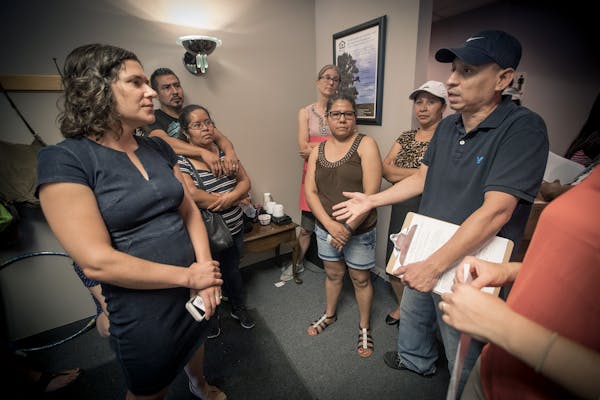Minneapolis is growing faster than it has since 1950, and most residents are renters. But incomes aren't keeping up with housing costs — especially for people of color, the fastest-growing population segment — and there's less affordable housing now than there was 15 years ago.
City leaders agree Minneapolis is in a housing crisis, mirroring what's happening in the metro region and across the country. At a meeting Thursday, City Council members said it's time to boost efforts to eliminate racial and socioeconomic disparities in housing and make Minneapolis a more accessible place to live.
"I feel a really deep sense of urgency to accelerate the work that we've been doing on housing stability in our community," said Council Member Lisa Bender.
Bender and Council Members Elizabeth Glidden and Lisa Goodman directed city staff members to return by Dec. 22 with plans for spearheading new housing initiatives and continuing work on existing ones. The direction includes more than a dozen topics — from tenant protections to racial disparities — and will involve four city departments.
Data that city staff members presented to the council Thursday show that barriers to housing access have been in place for decades and that the disparities are stark.
Most Minneapolis residents of color are renters, while most white residents own homes. Of cost-burdened households in the city — those that pay 30 percent of their income or more for housing — about 75 percent are renters.
The impact is most severe for black residents. City staffers cited a 2016 University of Minnesota Center for Urban and Regional Affairs study showing that in 2014, a typical black household could not live in Minneapolis without being cost-burdened.
The disparities can be traced to a history of discriminatory housing policies, staff members said. Racially restrictive covenants, which barred people of color from living in certain parts of the city, were active between 1910 and 1968. Today, those areas are still mostly white.
"We have an extremely, extremely segregated city," said Council President Barb Johnson.
City and county governments in the seven-county metro area submit a regular report to the U.S. Department of Housing and Urban Development on barriers to fair housing. The most recent report found that Minneapolis is already doing a lot of work on the issue but that it also has policies that stand in the way — for example, an ordinance limiting the number of unrelated people who can live in a unit.
Eric Hauge, director of organizing and public policy for the tenant advocacy group HOME Line, said Minneapolis has taken significant steps to address fair housing issues, including passing an ordinance in May that prohibits landlords from discriminating against Section 8 voucher holders. But there's more to be done, he said.
"The data clearly reflected that there's a significant trend happening in Minneapolis," Hauge said. "Minneapolis does have to be a leader on the issue."
Emma Nelson • 612-673-4509

Wisconsin Republicans ignore governor's call to spend $125M to combat 'forever chemicals'

FAFSA completions in Minnesota drop amid flawed efforts to update college financial aid form

Man killed in Minnetonka by law enforcement started gun battle with deputies, BCA says

